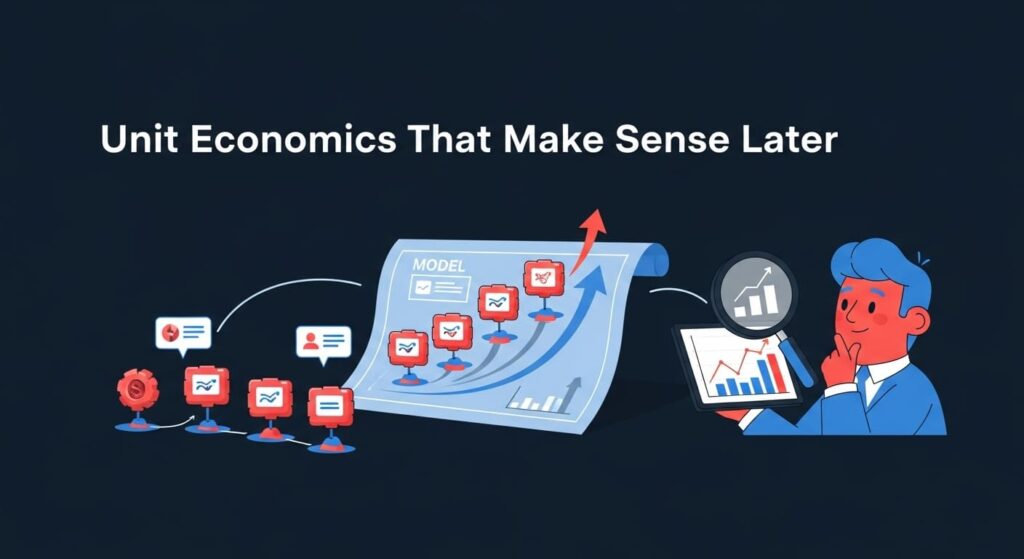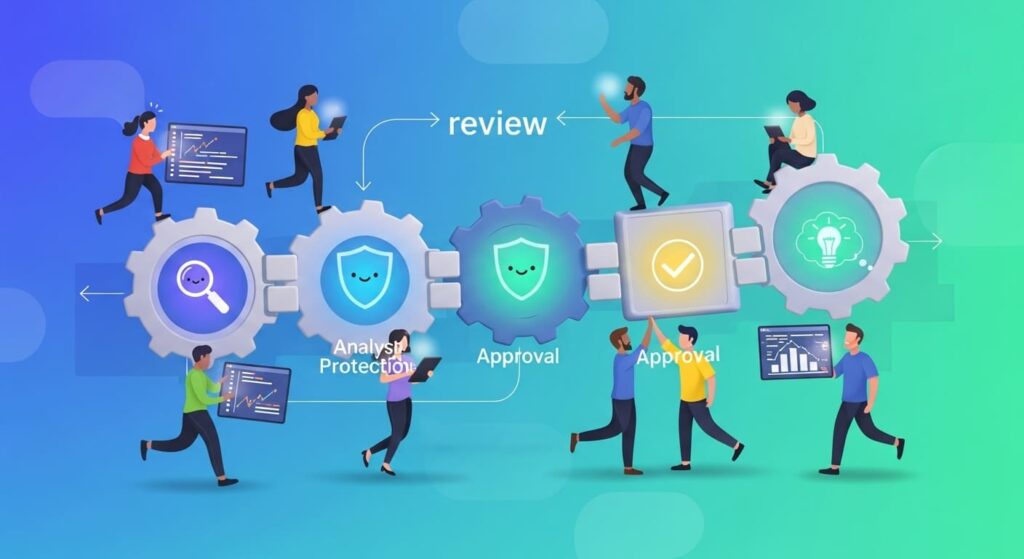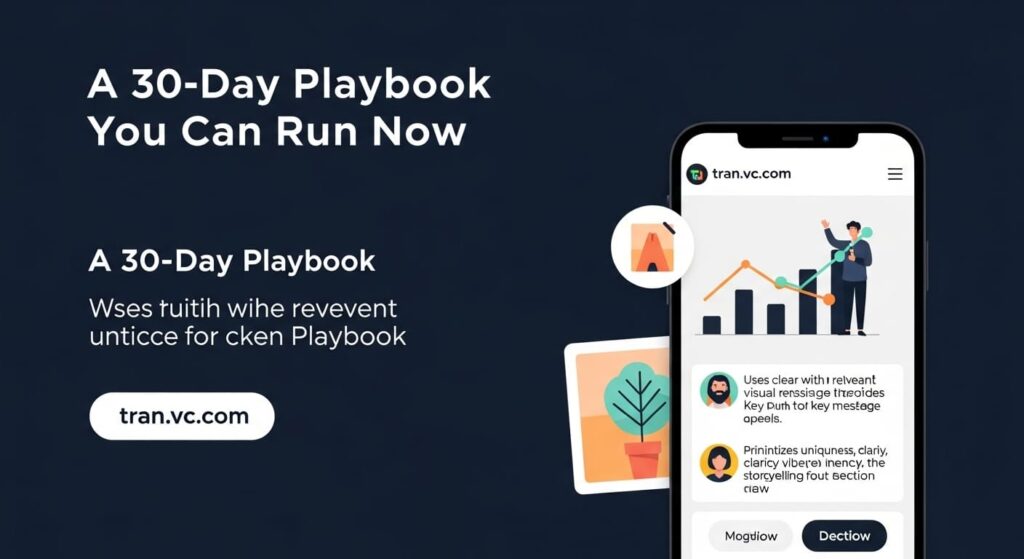You want to build a real company, not just a chart that goes up. Revenue matters, but it is not the whole story—especially at pre-seed. Investors look for proof that your product solves a hard problem, that users get value fast, and that your edge cannot be copied next week. They want calm, simple signals that show you can learn, move, and protect what you build.
This guide breaks down what top VCs watch beyond dollars in the door. You’ll see how to show traction without hype, how to talk about risk with clarity, and how to turn your tech into assets that last. We’ll keep the words plain and the steps practical. If you want a partner who invests up to $50,000 in in-kind patent and IP services so your moat is real from day one, apply any time at https://www.tran.vc/apply-now-form/.
What VCs Look For When Revenue Is Early

Early teams worry about dollars. That is normal. But in the first months, investors look for signs that your idea can grow into a real company. They ask, “Is the problem painful? Do users get value fast? Is the edge hard to copy?” These questions sit under many checklists. Your job is to show clear proof for each, in simple, honest ways.
Start with the problem. Name it in plain words. Say who feels it and how often it shows up. Show what happens if it is not fixed. Use short, real stories from the field. If you build for a factory, point to a shift that lost a day to rework. If you build for a lab, explain the time wasted on manual steps. When a VC hears this, they see the need, not just the tech. They see why now is the time to act.
Next is time to value. A founder can tell a good tale, but a user’s first “win” speaks louder. Track how long it takes a new user to reach one result that matters. Cut the steps. Remove setup that does not add trust. Give defaults that work. When you say, “a new line manager saw a defect in five minutes with our model,” people lean in. They know this speed will help sales, support, and renewal later.
Defensibility is the other big theme. Cool demos are everywhere. Durable edges are rare. Show why your method, data, or control loop is hard to copy. If your edge comes from how you fuse sensors, say that. If it comes from a model fine-tuned on rare data, say that. Then go further. Turn the edge into protected ground. This is where Tran.vc helps most. We invest up to $50,000 in in-kind patent and IP work so you can file smart claims early. You keep control. You raise on better terms. Apply any time at https://www.tran.vc/apply-now-form/.
Team That Can Learn Fast
A team at pre-seed is small. That is fine. What matters is speed of learning. Show that you talk to users every week. Show that you ship changes often. Share one change that moved a key number. Keep it short and true. “We saw new users stall on data import. We added a one-click template. Activation rose from 28% to 47% in two weeks.” This line says more than ten slides.
Investors also look for founder–market fit. Tell the personal link. Maybe you ran a line, wrote control code, or trained models in production. Maybe you lived the pain. This ties your grit to the job. It says you will stick with the hard parts. It also hints that you have the right networks to get design partners and hires. Simple stories beat big bios here.
Keep your house in order. Clean repos, short docs, and clear runbooks build trust. When a partner asks for a quick test or a metrics pull, you can do it fast. That speed feels like control. It also lowers risk, because people can see that your small team can handle more usage without chaos. If you want a second set of eyes on what to protect inside your code and methods, Tran.vc can help. Apply at https://www.tran.vc/apply-now-form/ and we will review where IP should live.
Users Who Care
“Customer love” sounds soft. It is not. It is the signal that powers the rest. Gather short notes from users in their own words. Keep them honest. A line like, “we caught a mis-pick in hour one,” carries weight. Pair these notes with light data. Show how often people come back. Show one chart with a stable tail. This shows habit, not hype.
Make it easy to try again. Save context. Keep presets. Offer a safe “dry run” for risky steps. If a robot might hit a guard rail, offer a virtual test first. If a model could give a wrong call, show confidence and explain the fallback. Trust goes up. Return visits follow. Investors do not expect scale yet. They expect respect for the user and care for the edge cases.
Finally, ask for small, paid steps. Free pilots drift. A small fee signals value and creates a clear owner on the buyer side. You can price it low. Keep scope tight. The goal is speed to proof. When you show a list of paid steps, even small ones, you shift the mood in the room. You are not “testing.” You are “delivering.” The words matter because they reflect intent and control.
Clear Path to Market

Great tech without a path to market is a science project. Map your path in plain terms. Say who buys first and why they can say yes now. Name the budget. Name the blocker. Name how you remove the blocker. If security reviews slow you down, bring a short packet with answers. If legal is heavy, bring a one-page order for a limited pilot. When you take friction off the table, cycles shrink. Cash comes sooner.
Keep your Ideal Customer Profile tight. Pick one role, one pain, and one use case. This does not limit you. It focuses you. With a narrow start, your talk track is sharper, your demo is cleaner, and your hit rate climbs. Later, you can expand. For now, you want a beachhead that funds your next step and teaches you the patterns that scale.
Track your qualified pipeline. Do not count every chat. Count real shots with a buyer, a problem, and a next step on the calendar. Tie the total to your near-term plan. If you need $40,000 in the next quarter, show $80,000 to $120,000 in real, near-term pipeline. This ratio is a simple way to read health. It calms the room because it makes tomorrow feel concrete.
IP That Locks the Door
Most early teams wait to file. They worry it is slow or costly. Done wrong, it can be. Done right, it is a lever. The key is focus. You do not need to protect every feature. You need to protect the core method that gives speed, accuracy, or cost edge. Claims around that core make copycats slow and keep your gross margin strong as you grow.
Think in systems, not just code. In robotics, protect how sensors feed your planner, how you blend signals, how you keep safety even when inputs are noisy. In AI, protect how you build and refresh data sets, how you fine-tune for a niche, how you score outputs and take safe actions. These are method claims, not mere lines of code. They tend to last longer and cover more ground.
Tie IP to your deck. When you say, “this loop is why users onboard in ten minutes, and we filed on the loop,” the room hears moat, not just motion. Later, when diligence starts, you can hand over clear docs and a timeline. You look ready for a real round. This is what Tran.vc does with founders like you. We roll up our sleeves and invest up to $50,000 in in-kind patent and IP work so your edge is set before the seed. If that is what you want, apply now at https://www.tran.vc/apply-now-form/.
Safety, Quality, and Trust
In AI and robotics, small mistakes can cause big harm. Treat safety as a feature, not a task. Show how you prevent bad actions. Show how you catch drift. Show how a human can step in fast. Keep logs clean and easy to read. When a buyer sees care here, they relax. When a VC sees it, they trust you can sell to the real world, not just a sandbox.
Proof beats claims. Record a short run where you handle an edge case well. Show a before and after. Keep it simple. “We saw glare on the camera, so the system slowed and asked for a second view.” The point is not to show off. The point is to show control. This kind of proof makes pilots safer and faster. It also gives you seeds for future patents around detection and fallback methods.
Quality is also about data. Track what goes in and what comes out. If inputs are stale, say it and guide the user. If outputs are low confidence, show it and suggest a next step. This honesty keeps trust high. It also turns into roadmap items that matter. You spend time on the parts that raise truth and cut noise.
Unit Economics That Make Sense Later

At pre-seed, you may not have full pricing. That is okay. Sketch the shape. Show how cost per unit drops as you automate setup, cut support, and reuse models. Show how price can rise with more lines, more seats, or more modules. Use simple numbers. Keep the math clean. A few examples beat a thick model that no one believes.
Investors want to see that as you grow, margin grows. They do not need exact cents. They need a sane path. If a step today takes a person an hour, ask how you make it a minute. If a model run costs a dollar, ask how you make it a dime. Each change you ship that moves these numbers is worth a line in your update. It is not just “we built.” It is “we built, and margin moved.”
This is where IP and product meet. If your protected method is the thing that cuts setup by 90% or halves false alarms, your margin edge is not just luck. It is law. That makes your price harder to erode and your sales easier to scale. If you want to map these edges and file clean claims around them, Tran.vc is set up for that work. Apply at https://www.tran.vc/apply-now-form/ and we will walk you through it.
Signals of Learning, Not Just Motion
Many updates list tasks done. Few show what was learned. Be in the second group. Share one finding each week and one change it drove. Keep it short. “Users missed the save step, so we auto-save. Repeat runs rose by 31%.” This read tells a VC you are not just moving—you are moving the right way.
Keep a cadence. Review key metrics every week. Look at new user activation, week-four return, days to first paid step, burn versus net new revenue, and near-term pipeline coverage. You do not need a dashboard with fifty tiles. You need a small set you can act on. When you show this rhythm, people see a team that can scale its own work.
Close the loop with the market. Post a short note about each release. Invite feedback. Answer fast. Small teams win by being close to the user and quick to ship. This is what many VCs prize more than early dollars. It shows future dollars will come in a steady, sane way.
Partnerships That Open Doors

Strong partners speed trust and shorten sales. The right one gives you reach, data, or a path into hard accounts. The wrong one slows you down. Treat partnerships like product work. Start small, learn fast, and keep control of your core.
Picking Partners Who Fit
Start with a clear picture of your first buyer. Choose partners who already serve that buyer today. A system integrator on the shop floor, a lab device vendor, or a cloud marketplace can all work. Ask for one thing: a warm path to two real accounts in your niche. If they cannot do that, it is not a fit yet.
Check values and speed. Meet the people who will work with you, not just the exec who signs. Do a tiny joint task together—like a co-demo or a pilot scope call. Watch how they prepare and follow up. If they move with care and keep promises, expand. If not, thank them and move on.
Structuring First Partner Wins
Keep the first deal small and clear. Define one use case, one site, and one result. Put names and dates on each step. Make the paperwork light: a one-page pilot order and a short referral or reseller letter. You want learning and trust, not legal theater.
Share the work. Give the partner an easy way to win with you. Offer a fast enablement session and a sample dataset. Give them a script that names the pain and the outcome in plain words. When the partner sees their client happy, they lean in. When the client sees a smooth handoff, they trust both of you.
Showing Joint Value Without Hype
Report one number you improved together, and show it before and after. If you cut false alarms, show the drop. If you raised yield, show the lift. Keep the chart simple and the language calm. A clean slide with one line beats a busy deck no one reads.
Turn the proof into a short story the partner can send. Two paragraphs, one image, one quote from the client. Put it on both sites if allowed. This story feeds the next intro and makes future deals faster. It also helps you raise, because real third-party proof is rare and strong.
Guarding Your Edge in Partner Work
Share only what the partner needs to sell and support. Keep your core methods inside your black box. Use clear terms that protect your IP and your data. It is fine to be open about outcomes and safe use. Keep the secret sauce yours.
If the joint flow uses a unique method you created, mark it and file. Claims around that control loop or data method will keep your edge even as more partners join. Tran.vc helps teams do this early. We invest up to $50,000 in in-kind IP services so your partner engine builds a moat you own. Apply any time at https://www.tran.vc/apply-now-form/.
Pricing Tests That Tell the Truth

Price is a story about value. Early on, you do not need a perfect model. You need tiny, clear tests that show what buyers accept for a real outcome. Keep the scope tight, the data clean, and the tone honest.
Setting a Simple Base
Pick one anchor that fits your first use case. It could be per line, per device, per seat, or per run. Choose the unit that your buyer already understands. Write a one-sentence price: “It costs X per Y to get Z.” If the buyer frowns, ask why. The words they use will guide the next test.
Include a small, paid first step. Even a modest setup fee sends a signal. It says this is work with value, not a free trial that drifts. Keep the fee tied to a clear output in a short time frame. When they pay and smile at the result, you can talk about the steady plan.
Designing Tiny, Safe Experiments
Change one thing at a time. If you raise the fee, keep the scope the same. If you add a module, keep the fee the same. This lets you read the result without noise. Write down the test, the reaction, and the outcome. In a month, you will see patterns.
Ask for what matters to the buyer. If downtime is costly, price for uptime gains. If rework hurts, price for scrap cut. When the price maps to pain, approval moves faster. Your tests will also be easier to compare, because they tie to the same simple result.
Reading Signals and Moving Up
Watch for quick yes, long maybe, and firm no. A quick yes says you left money on the table or nailed the price; follow with a small raise on the next deal. A long maybe says the value is unclear or the buyer is wrong; fix the story or the target. A firm no with a clear reason is a gift; use it to adjust the unit or the scope.
Once you have three to five paid wins in one setting, try a higher tier with one extra outcome. Keep the step calm. Do not jump from pilot to enterprise bundle overnight. Move from one line to two lines, or from one team to two teams. Each move should feel earned.
Linking Price to IP
If your method cuts setup time or boosts accuracy, name it in the talk track and protect it. Price rides on trust. Trust grows when the buyer sees a unique engine under the hood. Claims around that engine make rivals slow and your price steady. Tran.vc can help you choose what to file and when. Start here: https://www.tran.vc/apply-now-form/.
Security Reviews Without the Drag

Security can stall early deals. Treat it as a product. Prepare once, update often, and answer with calm facts. This turns a blocker into a quiet strength.
Preparing A Head Start
Build a short packet with the basics. State how you handle data at rest and in transit. Explain access control, logging, and backups. Name your hosting and the regions you use. Keep it in clear, plain words. Add a diagram that shows where data flows and where it does not.
Create friendly defaults. Use least privilege. Rotate keys. Enable MFA. Keep audit logs. These choices help you sleep and make reviews fast. In calls, show, do not just tell. Open the console and point to the settings. The trust you earn here shortens the path to a PO.
Answering Like An Adult
When a buyer sends a long questionnaire, respond fast with clean, direct answers. If you do not have a control yet, say so and give the date you will add it. Offer a temporary workaround if needed. Honesty moves things forward. Bluffing backfires and drags the cycle.
Keep a change log. When you improve a control, note the date and the reason. Send a brief update to active buyers. This shows progress and reduces repeat questions. It also gives you material for later audits when bigger accounts come knocking.
Reducing Perceived Risk
Offer safe modes. Let new users start with masked data or a read-only setup. Build a sandbox that mirrors their world without danger. When they can test without fear, they say yes faster. You get proof without risk to them.
Add clear alerts and stops. If the system sees drift or bad input, slow or halt and ask for review. This proves you care about safety more than speed. In AI and robotics, that stance wins buyers and eases legal reviews.
Audits, Logs, and Proof
Store logs for a sane period and make them easy to search. Show a buyer how you would trace an event. Keep your incident plan short and practiced. When you can walk through a mock event in five minutes, trust rises.
If you have a unique way to detect risk or recover fast, consider filing. A protected safety loop is a real moat. Tran.vc helps founders protect methods like these while keeping cycles quick. If that is your next step, apply at https://www.tran.vc/apply-now-form/.
Founder Updates That Build Trust

Great updates are short, regular, and tied to outcomes. They show learning, not just motion. They keep doors open and make later rounds smoother.
Setting a Steady Rhythm
Pick a day each month. Send the note even when news is modest. Use the same structure each time so readers know where to look. This habit says you run a tight ship. It also keeps you honest about the numbers that matter.
Focus on what changed and why it mattered. Share one screen before and after if helpful. A single image that shows a fix beats a list of tasks. Investors remember change tied to impact. Give them that.
What To Include
Start with a short headline on one big move. Then share a few key metrics: new user activation, week-four return, days to first paid step, burn versus net new revenue, and near-term pipeline. Keep each to one line. Close with one promise for the next note.
Add one real customer quote or a tiny case story. “We cut false rejects by half on line 3.” True words from the field carry more weight than claims. They also give your readers a way to sell you to a partner who missed the note.
Tone That Wins Respect
Be clear when things go wrong. Name the issue, the fix, and the new guardrail. Calm honesty builds more trust than spin. When the next update shows the number back up, your stock rises.
Invite help with specific asks. Name the role, the use case, or the account type you want. Make it easy to forward. Your network wants to help; give them clear doors to open.
Tying Updates to IP and Moat
When a change comes from a core method you plan to protect, say so. “New planner trimmed setup by 70%; provisional filed.” This blends traction with moat. It is rare and powerful. Tran.vc works with founders to make these lines true. Apply at https://www.tran.vc/apply-now-form/ if you want that edge.
A Data Room That Speeds Diligence

A tidy data room reduces friction when a check is close. Build it once and keep it fresh. You will look ready and save weeks.
What Belongs, Kept Simple
Create clear folders for product, GTM, finance, legal, and IP. In product, keep a short roadmap and architecture. In GTM, keep pipeline, case notes, and metrics. In finance, keep a simple model and bank statements. In legal, keep basic docs and contracts. In IP, keep filings and a short summary of claims.
Avoid clutter. Each file should earn its place. Use dates in names. Keep versions under control. A lean room is a sign of discipline. Review it every month after your founder update and clean what is stale.
Clean Structure and Fast Access
Use descriptive names and a one-page index that explains the layout. Add read-only links for most files and limit edit access. Track who has access with a simple log. When someone asks for a doc, you can grant it in minutes and see what they viewed.
Keep a short “FAQ” doc with common answers. When a new partner joins diligence, they can get up to speed without a live call. You stay in control of the story and save time.
The IP Folder That Tells a Story
Write a plain-English note on what you filed and why it matters. Tie each claim to a product outcome: faster setup, safer motion, better accuracy. Add dates and status. Keep it short and clear. This turns legal docs into a business story.
Include prior art you considered and why your angle is new. This shows care. It also speeds counsel on the other side. If you want help crafting this folder, Tran.vc does this with founders like you as part of our in-kind IP work. Start here: https://www.tran.vc/apply-now-form/.
Proof Assets That Close Loops
Store two or three short videos of the product in use, a few redacted screenshots, and one-page case notes with before-and-after numbers. These assets make your claims real. Diligence moves faster when proof is easy to see.
Refresh these assets each quarter. New wins replace old ones. Your data room becomes a living proof stack, not a dusty archive. That sends the right signal.
A 30-Day Playbook You Can Run Now

You do not need a giant plan. You need one month of sharp moves that stack. Keep it human, simple, and tied to results.
Days 1–10: Tighten The Wedge
Pick one use case and one buyer. Rewrite your pitch and demo to fit that one job. Cut extra steps in onboarding. Add one preset that gets a first win fast. Set up your security packet and a one-page pilot order. These small actions raise trust and speed.
Run two founder-led calls with design partners. Watch them click. Note the words they use. Ship one change that removes the biggest snag. Send a short update to your list with the before and after. Ask for two intros that match your ICP. Momentum starts here.
Days 11–20: Turn Proof Into Revenue
Scope a tiny, paid pilot with clear success. Price it in a way that fits your buyer’s world. Put dates on each step. Share a weekly check-in note with a screenshot and one number. This keeps focus tight and teaches you where to polish.
Enable one partner on this same wedge. Give them the script, the assets, and the pilot plan. Ask for one warm intro and run the call together. Capture the story and save it as a one-pager. You now have a repeatable move.
Days 21–30: Lock In The Edge
File a provisional on the method that made setup faster, results safer, or accuracy higher. Keep the write-up plain and focused on outcomes. This step turns your fast wins into a moat that lasts. It also strengthens your next raise.
Publish a short case note. Update your data room. Send your monthly founder update with five lines: activation, return, days to first paid, burn vs. net new revenue, and qualified pipeline. Close with one promise for next month. Then deliver on it. If you want a hands-on partner for this month’s run, Tran.vc can help—apply at https://www.tran.vc/apply-now-form/.
Conclusion
Strong companies start with more than dollars. They start with a real problem, a fast first win, and a moat that lasts. When you show this, revenue follows. Investors see a team that learns fast, protects its edge, and turns proof into steady progress. Keep your story plain. Show what changed, why it mattered, and how you will raise the floor again next month.
Treat trust as a feature. Build safety in from the start. Keep your data clean. Make your product easy to try, easy to buy, and easy to love. Share small, paid wins that happen on a clear clock. Protect the method that makes those wins possible. When your core loop is hard to copy, your price holds, your margin grows, and your pipeline moves with less push.
If you want a partner to help lock in that edge, Tran.vc invests up to $50,000 in in-kind patent and IP services for AI, robotics, and deep tech teams. We help you choose the right wedge, file smart claims, and tell a fundable story with calm, simple proof. If that is your next step, apply now at https://www.tran.vc/apply-now-form/.
